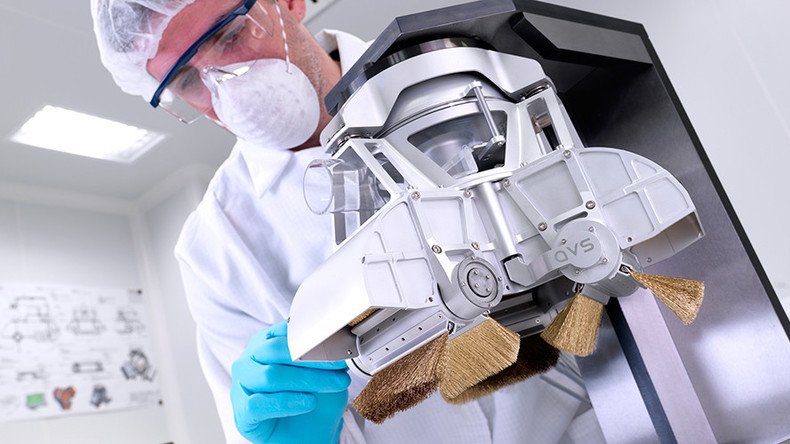ESA sending robot ‘cleaner’ into space to collect asteroid dirt (PHOTO)

The European Space Agency (ESA) is sending an "asteroid cleaner" robot to analyze “the dusty layers” of low-gravity moons and asteroids as part of their overall “exploration of the Solar System”.
The cleaner will spend three days in space and can gather 100g of particles in just 20 seconds, with the particles ranging in size from 0.001mm to pebbles as big as 3cm.
How would you clean an asteroid? This robotic dust collector will be put to the test soon: https://t.co/YffVVAV9DUpic.twitter.com/4cZUnR1paN
— ESA Operations (@esaoperations) April 5, 2016
Some Twitter users felt the technology employed was quite familiar and even offered up their own property to test the efficiency of the device.
@esaoperations I'm sure my vacuumer came with an extension like that. Could lend it to you if you want to cut costs on testing. :P
— Tofke_ (@Tofke_) April 5, 2016
@dcufan@esaoperations I think that would ruin some of your furniture and collectables tho right?? :)
— Matt Harris (@iam_mattharris) April 5, 2016
The current model is a prototype and uses three rotating brushes to scoop up dust and other particles into a sealed container for analysis.
READ MORE: ESA sends crude oil to space to test Earth’s underground reservoirs
The device monitors the distance between its brushes and the surface it’s "cleaning" and adjusts accordingly so it doesn’t accidentally push off from the asteroid or moon - to be lost in space for eternity.
The ESA says the cleaner could be a more viable option for asteroid analysis than a drill or a simple scoop, given the low-gravity risk of such appendages destabilizing the asteroid lander and edging it off the surface altogether.
The “asteroid cleaner”, designed and built by a team in Spain, is due to fly on ESA’s 64th parabolic aircraft campaign later this month for a three-day trip. Operators will monitor the robot’s camera and adjust settings such as speed, brush depth and sampling duration during weightlessness.












